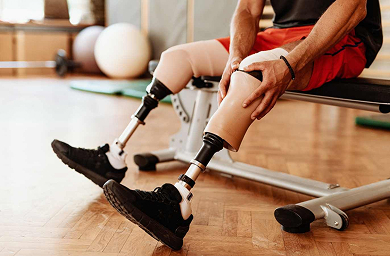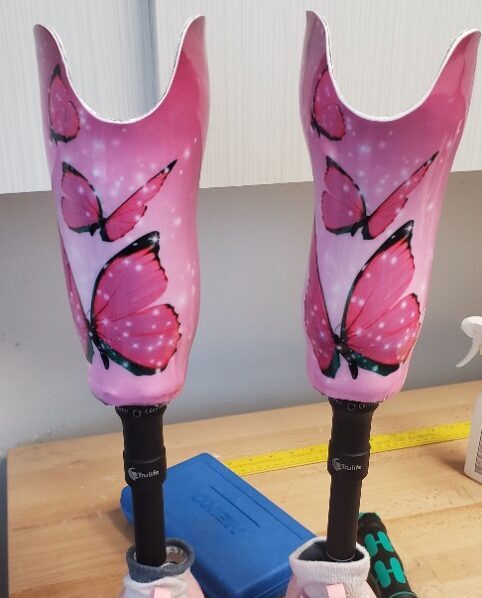Deciding on a prosthetic device is a significant step in your journey after amputation. It’s a decision that will directly impact your comfort, mobility, and overall quality of life. At Nevada Limb & Brace, we believe in empowering our clients with the knowledge they need to make informed choices. This post will guide you through some key considerations when choosing the right prosthetic for your individual needs.
Understanding Your Activity Level and Goals:
The first and most crucial step is to clearly define your activity level and personal goals. What do you envision yourself doing with your prosthesis? Are you looking for a device primarily for walking around the house and light errands? Or are you aiming to return to more demanding activities like hiking, running, or specific sports? Your aspirations will heavily influence the type of prosthetic components and design that will be most suitable for you. Be honest and detailed with your prosthetist about your desired level of activity.
The Importance of a Comprehensive Evaluation:
A thorough evaluation by a certified prosthetist is paramount. This assessment will take into account several factors, including the level of your amputation, the condition of your residual limb, your strength, range of motion, and overall health. Your prosthetist will also discuss your lifestyle, occupation, and hobbies to gain a holistic understanding of your needs. This evaluation forms the foundation for recommending the most appropriate prosthetic options.
Exploring Different Types of Prosthetic Components:
Prosthetic devices are comprised of various components, each serving a specific function. Understanding these components will help you engage more meaningfully in the selection process:
-
Socket: This is the crucial interface between your residual limb and the prosthesis. A well-fitting socket is essential for comfort, stability, and control. Different socket designs and suspension systems exist to accommodate various limb shapes and activity levels.
-
Knee and Foot (for lower limb prostheses): These components offer varying degrees of functionality and sophistication. Options range from basic mechanical joints to advanced microprocessor-controlled systems that adapt to different walking speeds and terrains. Similarly, prosthetic feet are designed for different levels of impact and activity.
-
Wrist and Hand (for upper limb prostheses): For upper limb prostheses, the terminal device (hand or hook) and wrist unit are key. Options range from passive, cosmetic devices to body-powered or myoelectric (muscle-controlled) devices offering varying degrees of grip strength and dexterity.
-
Suspension System: This is how the prosthesis is attached to your residual limb. Common methods include suction, straps, pin locking systems, and elevated vacuum. The most suitable suspension system will depend on your individual needs and the characteristics of your residual limb.
The Role of Your Prosthetist:
Your prosthetist is your primary partner in this process. They possess the expertise to evaluate your needs, recommend appropriate components, custom-fit your device, and provide ongoing adjustments and training. Don’t hesitate to ask questions, express your concerns, and actively participate in the decision-making process. A good prosthetist will listen to your feedback and work collaboratively with you to achieve the best possible outcome.
Considering Comfort and Fit:
Comfort is paramount for long-term prosthetic use. A poorly fitting prosthesis can lead to skin irritation, pain, and difficulty with mobility. During the fitting process, pay close attention to how the socket feels, both at rest and during movement. Communicate any areas of discomfort or pressure points to your prosthetist. Achieving a comfortable and secure fit may require multiple adjustments.
Understanding the Long-Term Aspects:
Choosing the right prosthetic is not a one-time decision. Your needs may evolve over time, and your prosthesis may require adjustments or eventual replacement. Discuss the expected lifespan of different components and the maintenance requirements with your prosthetist. Understand the warranty coverage and the process for obtaining repairs or replacements when needed.
Empowering Your Choice:
Choosing the right prosthetic is a personal journey. By understanding your activity level, actively participating in the evaluation process, learning about different components, and working closely with your prosthetist, you can make an informed decision that empowers you to live life to the fullest. At Nevada Limb & Brace, we are dedicated to providing you with the expertise and support you need every step of the way.
Contact Nevada Limb & Brace today for a comprehensive evaluation and to explore your prosthetic options.




